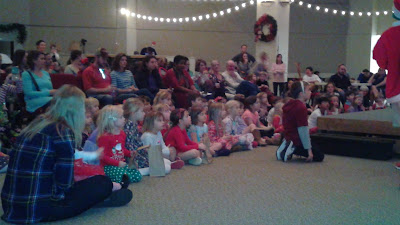After working with small children for many years, we have developed a few tricks of the trade when it comes to preschool lunch boxes. While these are not guaranteed to work for every child, we've found them to be fairly universal across age groups and appetite types. Try each with an open mind and be ready to adjust at any given moment...just as with anything related to little ones!
1) Portion Sizes: We know that as a country, our portion sizes have gotten bigger and bigger over the years. So, it's hard to know how much is appropriate for our little ones. Below is a good guideline to illustrate how to know if you are providing the correct portions for your child.
 |
| Taken from www.henry.org.uk |
While these guidelines are important, we also know from experience as parents that we all tend to pack a little extra for our kiddos each day. With kids this age, sometimes you never know what they're going to eat, so extra seems to be the way to go! We suggest doing this a few times as a test, then pulling back on portions if a lot of food is coming home uneaten.
2) Sweets and treats: According to the state guidelines we are required to follow, we are not responsible for ensuring the children's nutritional needs are met when parents provide the lunch. During lunchtime, teachers are engaging in social interactions with the children and the overall management of the busy classroom. So, if Sally has Oreos, the teacher's main focus will not be to keep her from eating them, even if she reaches for them as soon as she opens her lunch box! The best rule here is that if you don't want Sally to eat Oreos first, don't send Oreos in Sally's lunch. We talk to our kiddos about "healthy" vs. "sometimes" foods, but are not able to truly enforce which they eat while they are here. The best policy for treats is to send them rarely so that it truly is a treat!
3) Communication is Key: If you are unsure what to pack, ask! Sometimes there are kiddos who only want what the kid next to them is having. If you think this may be the case with your kiddo, let the teachers know and they will be happy to help you plan accordingly. If Joey is bringing a ham sandwich that is coming home every day, it may be that he is longing for Sam's hot dog! Once the children are home, the issue is long gone from their minds, but chances are the teachers will remember. If you have questions about what your child is eating while at school, please feel free to communicate with the teachers. We all know that nutrition is key to development and always want what is best for our sweet kids.
4) Ideas galore: There are some kids who are happy with the same lunch every day, while others prefer variety. For those who would like to try different things, having resources full of new ideas is essential. A quick Google or Pinterest search will give you more ideas than you can make in a year, so we've narrowed it down to a few of our favorites to help get you started:
A week of Easy, Healthy Lunchbox Ideas by The Chronicles of Home
No Sandwich Lunches by What Lisa Cooks
Top 10 Kid-Friendly Wraps by Super Healthy Kids
While all of these ideas can help ensure your child eats and enjoys a healthy lunch at school, it's important to remember that this lunch is only one meal out of many he/ she will eat each week. If he/ she isn't a big eater at school, never fear! The teachers take note of this and often offer extra snacks and lots of water to help get the child through the day until they come back home hungry and ready to eat!







































